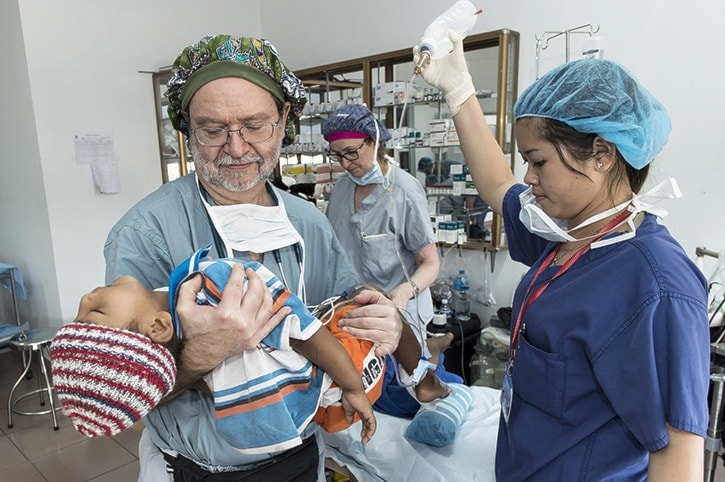A South Surrey photographer is sharing his experience after spending nine days in Cambodia with a Vancouver-based non-profit medical organization.
Brian Giebelhaus – Peace Arch News’ main photographer for 22 years until 2011 – travelled to Phnom Penh with Operation Rainbow Canada last month to document plastic surgeons as they worked on dozens of patients with cleft lips, cleft palates and other deformities.
Through the group, medical teams travel to Third World countries and provide free reconstructive surgeries for children and adults who could otherwise not afford them.
Families came from all over Cambodia to receive the operations, Giebelhaus said.
“Any issues that they can deal with through the door, they handle,” he said, noting that there were a number of burn victims operated on at the clinic. “There is not much that they actually turn down.”
Giebelhaus heard about Operation Rainbow Canada through a colleague and approached the organization to assist as a photographer.
 “The main goal for me was to document people as they came in, to do the before-and-after pictures,” he said. “It’s interesting because I don’t think anyone knew what I was going to end up with.”
“The main goal for me was to document people as they came in, to do the before-and-after pictures,” he said. “It’s interesting because I don’t think anyone knew what I was going to end up with.”
It was the first time a professional photographer had captured the images of the men, women and children who receive the life-changing operations, he noted.
Over the nine days, more than 100 patients were operated on, including many children. Without the surgery, those children can be shunned, ostracized and even denied schooling.
Giebelhaus noted that one of the patients who came in with a double-cleft lip had been named Cleft by her parents.
“She has a disadvantage of having a cleft lip in the first place and all that comes with it for self-esteem and all that stuff right, and then they go ahead and name her Cleft as well,” he said.
Though each patient had a story – whether it was an infant or a woman in her 70s coming to have the operation – Giebelhaus recalled one patient in particular who made an impact on the staff and himself.
Sak Sambo, 14, came into the clinic covered in taut scars after he survived a gas explosion in his home when he was just four months old. He’d been unable to close his eyes since he was an infant, and his hand was pulled backward.
“This little guy, he’s 14 here… he grew up with all these injuries,” Giebelhaus said. “I almost burst into tears when I first saw him. How the hell did he get to that size? It blows your brain as to what these people can endure.”
The staff operated to cut the skin near his eyelids and added grafts in order for him to close his eyes, and they performed surgery on his hand.
Almost as unbelievable as his story was, Sak had persevered despite his injuries and took care of his younger siblings, Giebelhaus noted.
“I thought, as a former news photographer, there wasn’t much that was going to get me to choke up. But that was one who really got me going,” he said.
Operation Rainbow Canada’s missions cost between $50,000-80,000, with much of the funding coming from donations, fundraisers and government contributions.
Administrators and medical-team members are unpaid and provide their services on a volunteer basis.
For more information, visit www.operationrainbowcanada.com
